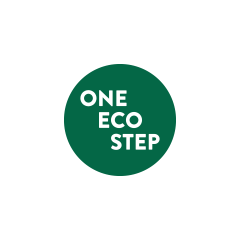Which bottle steriliser should I get?

If you're bottle-feeding, you would be familiar with the routine of rinsing and sterilising bottles every day. It's time-consuming and no doubt one of the worst parenting tasks. If you're like me, you'll probably have 6-8 bottles every night waiting for you to wash after the kids are asleep. Washing and sterilising can take up to 40 minutes of your time. So how can we make it more time-efficient for you?
Read our article on what you need to know about bottle-feeding.
Choose the right steriliser
It simply is not time-efficient to boil a pot of water and sterilise all the bottles and teats in there for 5-10 minutes. You can do it, but there's now an easier way to do it.
1. Microwave steam steriliser

Add 200ml of water into the base of the steriliser, load your bottles and teats into the steriliser, close the lid, place it in the microwave, and set your timer for 4 minutes (depending on the wattage of the microwave). Once the cycle is complete, the bottles are sterilised and as long as the lid remains closed, the bottles remain sterile for up to 24 hours.
Pros:
Easy to clean
Quick and easy
Travel-friendly
Cons:
Small - some sterilisers can only fit up to 4 bottles
Some tall bottles don't fit in the steriliser
Bottles remain wet after sterilisation. To avoid bacteria growth, some mums drip dry the bottles on a drying rack after sterilisation and store them in a container. Some also store the bottles in the fridge after sterilisation.
Some mums are not comfortable with placing plastic bottles in the microwave for fear of melting the bottle
2. Electric steam steriliser
This is similar to a microwave steam steriliser, with the difference being that it is plugged to a power source. A recent Minbie steriliser has the drying function in-built in the system, so this is a huge plus!

Pros:
Can fit more bottles than microwave steriliser
Avoid heating up plastic bottles in a microwave
Cons:
Slower than microwave steriliser, takes 10-15 minutes (to sterilise only)
Not portable
Takes up bench space
Need to descale the unit periodically
Bottles remain wet after sterilisation (for most brands)
3. Cold water steriliser
Sterilising tablet is placed into 5 litres of cold water. Bottles must then be completely immersed in the solution for 15 minutes. The bottles need to be rinsed in boiled water before use to completely get rid of the chemical solution.

Pros:
Travel-friendly
Cons:
Some mums are not comfortable with using strong chemical solution to sterilise baby bottles
Heavy use of water
Bottles remain wet after sterilisation
4. UV steriliser

UV technology is commonly used in the medical industry to sterilise tools and equipments. Now available for domestic use, mums can use UV steriliser to sterilise their baby bottles and accessories. The UV steriliser is equipped with ultraviolet bulbs that radiate ultraviolet rays and moderate heat to dry and sterilise the bottles. There is no need of water, chemical and microwave in this method of sterilisation.
Pros:
One-click button to dry and sterilise - no extra steps to fill in water to sterilise and dry bottles after
Kills 99.9% of bacteria without the use of chemicals
Cons:
Odour in plastic bottles after sterilisation
Need to replace ultraviolet bulbs after some time
Takes longer to dry and sterilise (up to an hour for both functions)
Expensive
Hope this helps mamas xx
